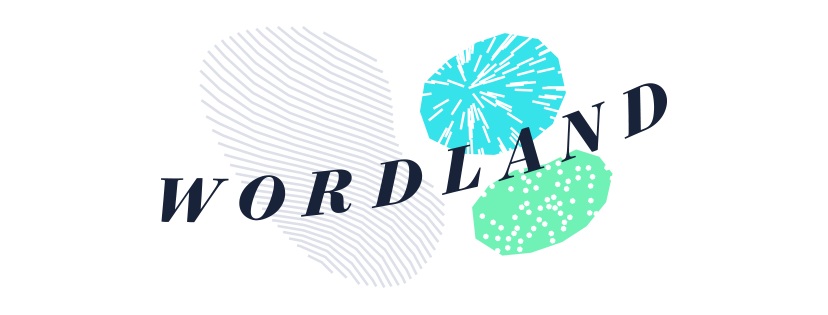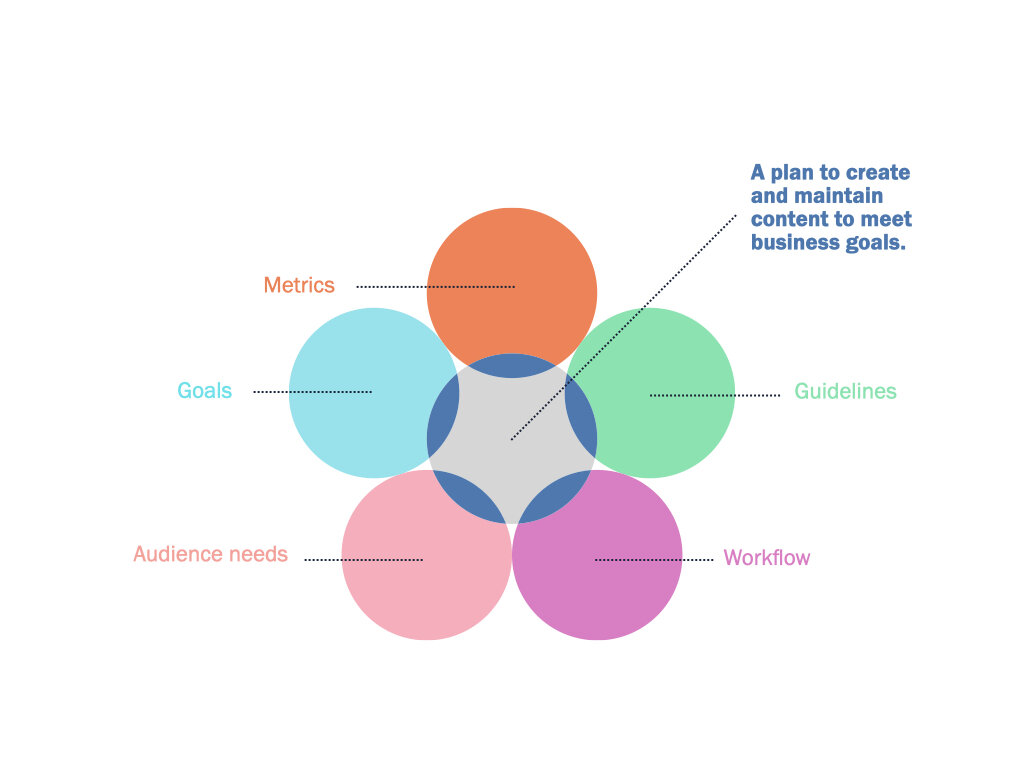Intro to Content Strategy
A little about me
I’ve been a content strategist at Wordland Design for a few years now. But while my background includes over 10 years of working as a writer, studying writing, and editing others’ writing, it wasn’t until I started working with Wordland that I became much more involved in learning the ever-evolving world of content strategy.
To be honest, until becoming a content strategist myself, I didn’t entirely know all that it entailed. So now that I’ve got a few years under my belt, I wanted to share some of the things I’ve discovered through working with our clients on a lot of different kinds of projects.
What is content strategy?
Here at Wordland, we define digital content strategy as
A plan to create and manage content to meet business goals
This means that we don’t just think about the writing that needs to be done for a website or product, but that we think about the processes and systems that we can put in place to make sure a company’s voice stays consistent no matter who’s writing.
We research
We usually start by asking who the audience is for a particular website or product. Who will be reading the content on a page or screen? What are their interests? What challenges do they face, and how is this product set up to solve these challenges?
After gaining a clear understanding of who the target audience is, we then try to figure out:
How can we use content to differentiate the brand?
How can we connect with customers to establish long-term relationships, while also getting the right “clicks” to meet short-term goals?
How can the content we include complement the design and overall usability of a site or product?
We capture clear metrics
We apply careful research and analysis to figure out the answers to the questions above, which all get documented in a content brief. Only when this brief is thoroughly filled out with consensus from all stakeholders do we actually start to create the content itself.
We collaborate as we write (and re-rewrite)
Most of my day-to-day work involves collaboration with designers, product managers, and other content designers at companies like Intuit and Volvo. We send updates through Slack, share designs and comment on them in Figma, tweak content in Google Docs—whatever tool makes it easiest for all team members to stay on the same page at each point in the process. Content creation requires a lot of writing and rewriting, especially as products change or we gain new knowledge.
We deliver
We deliver both the content needed to meet goals and the systems needed to maintain that content over time.
How do we think about content?
Content strategy leader Kristina Halvorson describes content strategy as “getting the right content to the right people in the right place at the right time,” and we think this pretty much sums it up. When I’m working on a digital strategy project, I try to think about these details in depth. Let’s dig into them a little bit, starting with the people (because at Wordland we think that’s the most important part).
The right people
As I mentioned above, Wordland usually kicks off every new client project with a strong focus on target audience, a.k.a. “the right people.” Who, exactly, are we trying to reach?
Everything is easier once you have the answer to this question. In my decade or so of writing, there’s never been a moment where I haven’t asked myself who I’m writing for. If you truly know your audience and have research and data to understand them, chances are you’ll know exactly what they want and need from your website or product.
Not only that, but you’ll know what words they like or don’t like, what other websites they look at (which you can then compare to your site with a landscape analysis), where they shop, or what other things they’re doing at the same time that they’re scanning your site or engaging with your app. All of this insight informs the type of content that needs to be created in order to build a consistently rewarding relationship.
The right place
This is where we think about where content needs to appear. In other words, the context that informs your content. Where will customers be looking for specific information? How should we organize content based on our goals and our target audiences’ needs?
These questions are important when figuring out the overall structure of a site or app, and we think a lot about how much ease of navigation affects a customer’s experience. For example, we’ve had the pleasure of working with a lot of tech companies who are working to create really powerful products. But while these products are attempting to make life easier overall, the flip side is that the complexity of some of them can at first seem a little intimidating to newcomers. Here’s where Wordland steps in and works closely with cross-functional teams to uncover what content could be added at each touchpoint to make things easy to find, clarify terms, or even just explain the purpose of an app screen or webpage altogether.
The right time
This is where we ask ourselves, “When should we deliver what messages?” Here’s an example.
At one point in our years-long relationship with Volvo, we were writing content for the Volvo on Call app, which helps Volvo drivers stay connected to their cars at all times. While writing a push notification to inform drivers about a feature they could use while at the airport, we knew we had to think carefully about our audience and what they’d be doing at the time they received the notification on their phones. We imagined them rushing through the airport, searching for their gate, dragging around heavy luggage, etc. They wouldn’t necessarily be in the mood to be interrupted with a lot of content to read about their car.
With all those details in mind, we needed to keep the content short, concise, and immediately focused on the benefit of using the feature we were notifying them about.
This is just one very specific moment, but other examples of content delivered at “the right time” might include:
Introductory how-to information the first time a customer uses a product or app
Banner content during promotions or to alert customers about changes in a service
Help docs or FAQs if customers are stuck or having trouble making a decision
These are all examples where timing is everything. Starting customers off in the right direction, notifying them of exciting offers, or helping them if they run into problems before they have a chance to get frustrated all increase the likelihood they’ll come back to use your app or visit your website again.
The right content (and calls to action)
This is where we think about where in a journey our customer audience might be. Are they trying to add something to their cart on an e-commerce site? Are they trying to use a specific feature in an app? Learn something about a new product?
Whatever they’re up to, it’s our job to make things clear and easy for them. If customers are adding something to a cart, for example, a digital content strategist’s job is to create clear text that guides them through the purchasing process. This might mean creating button text with a compelling call to action (CTA) and follow-up content to let them know their action of adding something to their cart actually happened. We’re there to help people at every step of an experience and make them feel good in the process.
In conclusion...
As you can see, content strategy isn’t just one thing. It’s a way of looking holistically at a project and envisioning how all the elements come together to create a digital experience that can be easily maintained and scaled. These elements involve audience, design, overall business goals, and so much more. As a content strategist, my job is to understand the relationship of all these factors and create a digital experience that brings people back again and again.












